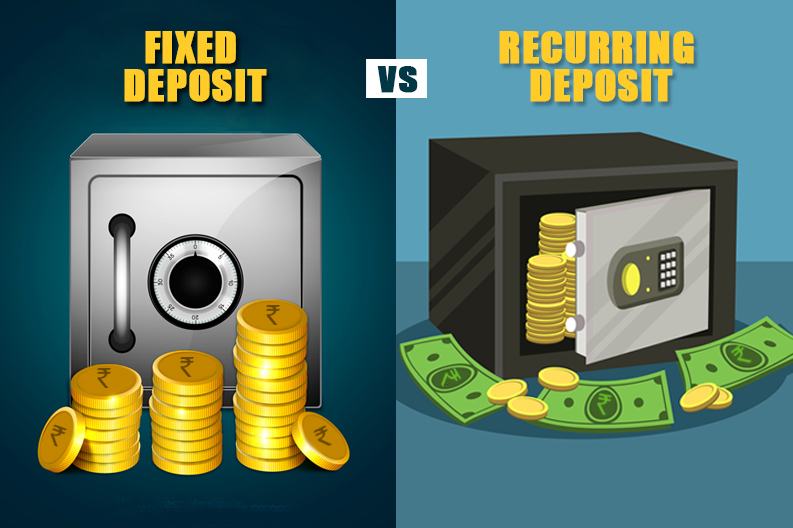FD and RD
FD- Fixed Deposit
RD- Recuring Deposit


FD
In a Fixed Deposit, you put a lump sum in your bank for a fixed tenure at an agreed rate of interest.
At the end of the tenure, you receive the amount you have invested plus compound interest.
RD
A Recurring Deposit, commonly known as RD, is a unique term-deposit that is offered by Indian Banks.
It is an investment tool which allows people to make regular deposits and earn decent returns on the investment.
Due to the regular deposit factor and an interest component, it often provides flexibility and ease of investments to users
Interest rates on FDs are fixed when you open the deposit and the rate depends on the term that you wish to hold it for.
Visit the HDFC Bank website to view the latest FD interest rates..
A Fixed Deposit offers guaranteed returns.
Unlike market-led investments where returns fluctuate over time, the returns on an FD are fixed when you open the account.
Even if interest rates fall after you open a Fixed Deposit, you will continue to receive the interest decided at the start.
FDs are considered much safer than investments in other assets like equity.
Your return on an FD will depend on the interest rate and the type of deposit you choose.
You can opt for a monthly or quarterly pay-out of interest or the reinvestment option, which will give you the benefit of compounding.
Check the HDFC Bank FD Interest Calculator to calculate your return on investment.
Bank offers Fixed Deposit in flexible tenures ranging from 7 days to 10 years.
While FDs are fixed for an agreed tenure, you can take a loan against it when you need funds.
Banks offers loans against FD in the form of an overdraft, and you can get up to 90% of your FD amount.
The benefit is that your FD continues to earn interest, you don’t have to prematurely withdraw your FD, and end up paying a penalty.
RDs are flexible in most aspects.
An RD account holder can choose to invest a fixed amount each month while earning decent interest on the amount.
RDs are an ideal saving-cum-investment instrument.
Most major banks in India offer Recurring Deposit Accounts, with a term that often ranges between 6 months to 10 years, also providing individuals with the opportunity to choose a term according to their needs. However, the interest rate, once determined, does not change during the tenure; and on maturity, the individual will be paid a lumpsum amount which includes the regular investments as well as the interest earned.
Recurring Deposit schemes aim at inculcating a regular habit of saving in people
The minimum amount for deposits often varies from one bank to another.
You could invest with an amount as small as Rs. 1000.
The minimum period of deposit is six months,
while the maximum period of a deposit is 10 years.
The rate of interest is equivalent to that offered for a Fixed Deposit.
Therefore, the interest rates are higher than Savings Account.
Premature withdrawals are However, depending on the bank, they may allow you to close your account before the maturity period on certain conditions.
A Recurring Deposit can be funded periodically through Standing Instructions that are usually instructions given by the customer to the bank, to credit the RD account every month from his/her Savings or Current Account.
Watch this video to get undersatnd this better and then go to the quiz